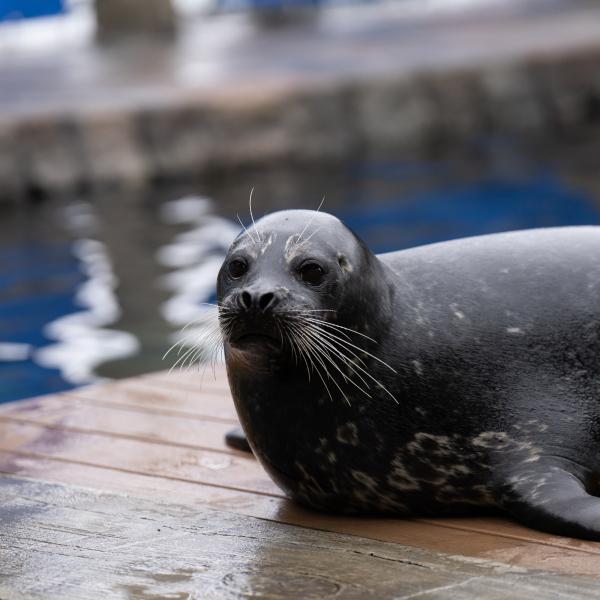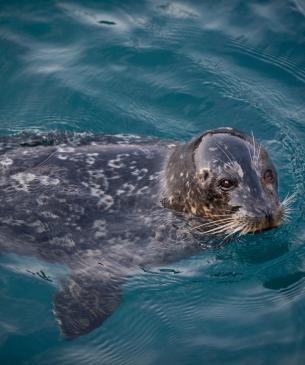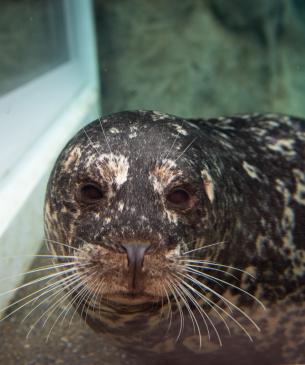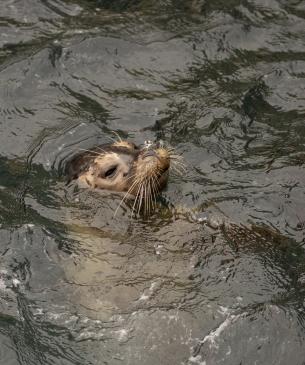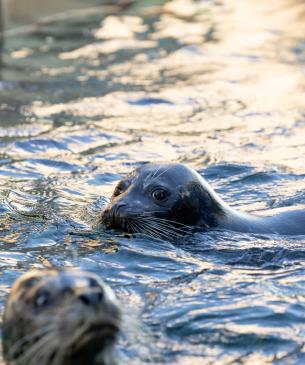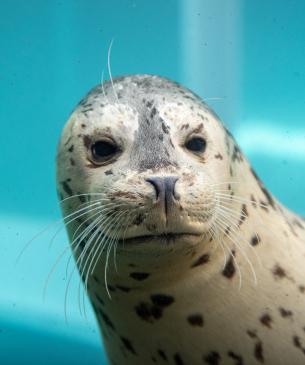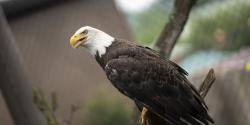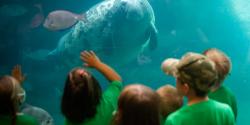Harbor seals usually return to the same places to breed each year. Mating happens from late spring to fall. Before they have pups, male and female harbor seals show signs of wanting to mate, such as rolling on the ground, blowing bubbles, and playfully nipping at each other’s necks. Males may mate with multiple females, and they typically mate in the water.
Harbor seals have a unique way of becoming pregnant called delayed implantation. This means that after a fertilized egg forms, it doesn’t attach to the mother’s uterus right away. This allows the mother to become pregnant when there is plenty of food available. If food is limited, females usually do not have pups.
Female harbor seals generally give birth on land, on ice, or in shallow water close to shore. At birth, their pups are well-developed, with open eyes, weighing between 18 to 26 pounds and measuring 30 to 39 inches long. The pups can swim and follow their mothers right away. They nurse for about four to six weeks. Their mother’s milk is very rich, containing up to 45% fat, which helps the pups more than double their weight by the time they are weaned. Unlike other seal species, harbor seal mothers do not stay with their pups all the time while nursing; they leave to find food in the ocean. Scientists think they do this because their smaller size doesn’t let them store enough fat to go without food for too long.
During the nursing period, the mother is very caring and often nudges her pup. The pup might ride on her back, bite at her flippers, or chase her through the water. Once the pup is weaned, the mother shows little interest in it. After weaning, the pup learns to catch shrimp and small crustaceans, and later, it learns how to catch fish.

